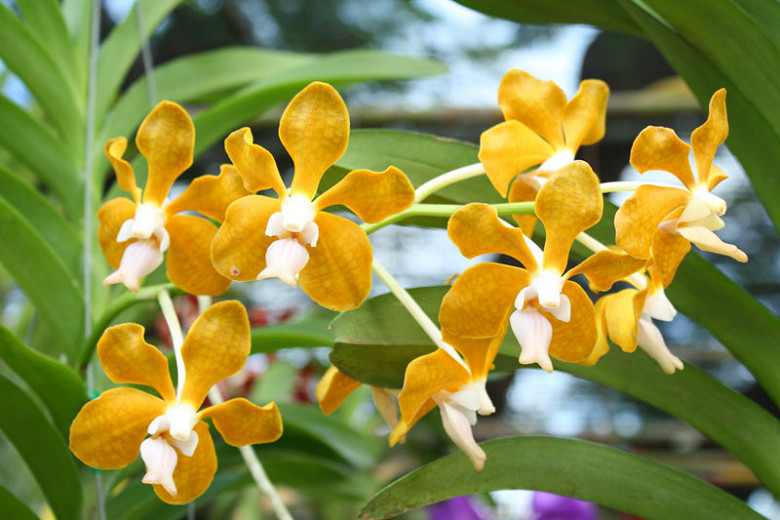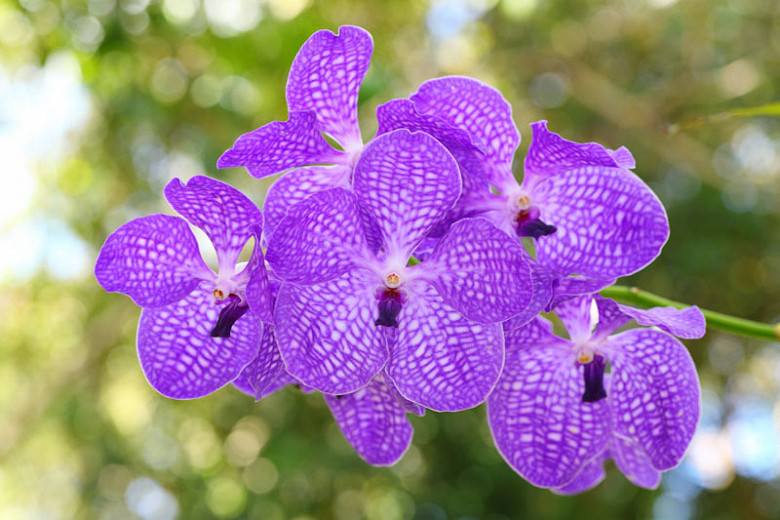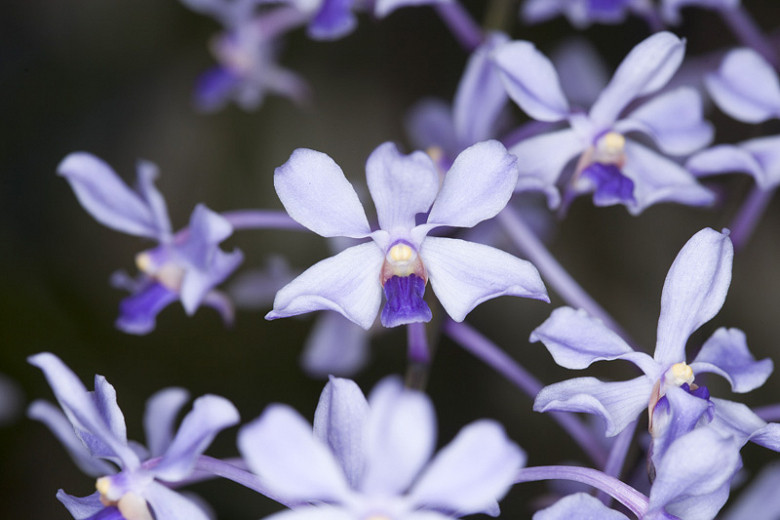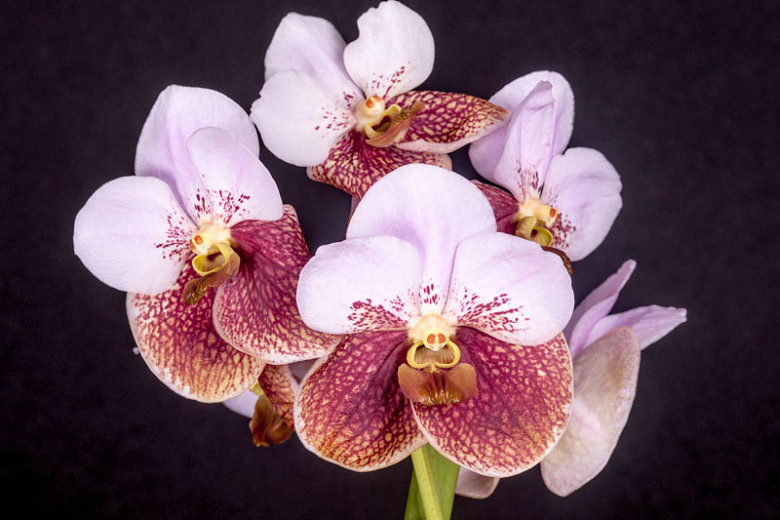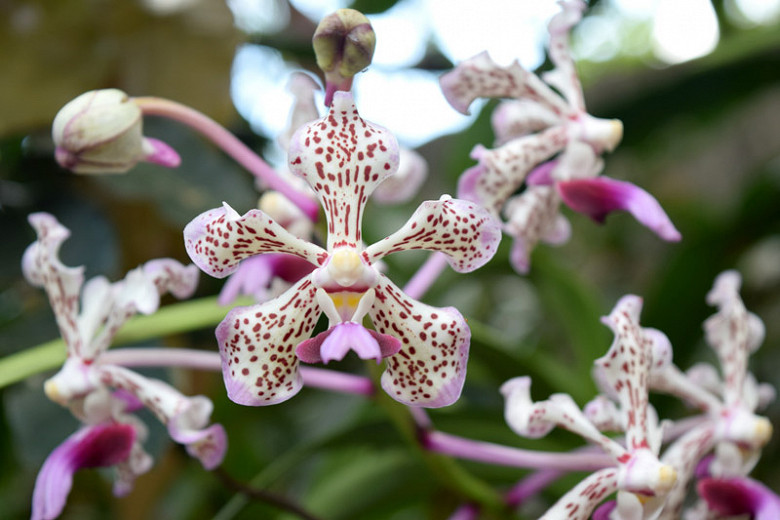Vanda denisoniana (Lady Denison Londesboroughs Vanda)
Vanda denisoniana (Lady Denison Londesborough’s Vanda) is a medium-sized epiphytic orchid species boasting erect axillary inflorescences giving rise to strong vanilla-scented flowers in the evening. Blooming in late winter and spring, the blossoms, 2 in. across (5 cm), feature creamy-yellow sepals and petals and a yellow-green lip.
Vanda denisoniana (Lady Denison Londesborough's Vanda) is a medium-sized epiphytic orchid species boasting erect axillary inflorescences giving rise to strong vanilla-scented flowers in the evening. Blooming in late winter and spring, the blossoms, 2 in. across (5 cm), feature creamy-yellow sepals and petals and a yellow-green lip. The evergreen leaves, up to 12 in. long (30 cm), are stiff, and leathery, and their ends are sharply split. Native to China and Indo-China, Vanda denisoniana is a hot to cool growing orchid species found on tree trunks in forests at elevations of 2000,2480 ft. (600-750 m).
- Grows up to 12 in. tall (30 cm).
- Grows best in moderately bright light and should not be exposed to the direct sunlight of the midday sun. Provide good ventilation. The leaves should be medium green, not dark green. Dark green leaves indicate not enough light.
- Optimum spring temperatures are 62-66°F (17-19°C) at night, and 87-89°F (31-32°C) during the day.
- Optimum summer temperatures are 66-68°F (19-20°C) at night, and 80-84°F (27-29°C) during the day.
- Optimum winter temperatures are 48-50°F (9-10°C) at night, and 77-82°F (25-28°C) during the day.
- Maintain adequate humidity (80-85%) in summer, (60-655%) in winter and spring. Set the plant on a tray of gravel, partially filled with water, so that the pot never sits in the water.
- Water heavily during the active growth period. Reduce watering in late fall and water sparingly in the winter.
- During active growth, fertilize every week or every two weeks with 1/4-1/2 of the recommended dose of fertilizer for orchids.
- Propagate by division when the plant overflows the pot.
- Once the flowers have faded, remove the spent flower spikes.
- Potting is necessary when the rhizome of the plant protrudes over the edge of the pot or the potting medium starts to break down. This should be done in the spring. Use a coarse medium, whether fir bar, tree fern, or charcoal, and work it around the roots. Keep shaded, humid, but drier at the roots until new root tips grow. Do not overpot.
- Generally disease free. Keep an eye out for aphids, glasshouse red spider mites, and mealybugs.
- Native to Myanmar, Thailand, China, Laos, and Vietnam.
Tip for reblooming
- Vanda orchids should bloom at least once a year. If your orchid does not flower, move it to a location where it will receive more light and sun. This may resolve the problem.
Requirements
| Hardiness | 12 – 13 |
|---|---|
| Plant Type | Orchids |
| Plant Family | Vanda – Orchids |
| Exposure | Partial Sun |
| Season of Interest | Spring (Early,Mid,Late)Winter |
| Height | 6" – 1' (15cm – 30cm) |
| Water Needs | Average |
| Maintenance | Average |
| Soil Drainage | Well-Drained |
| Characteristics | Showy, Evergreen |
| Garden Uses | Patio and Containers |
